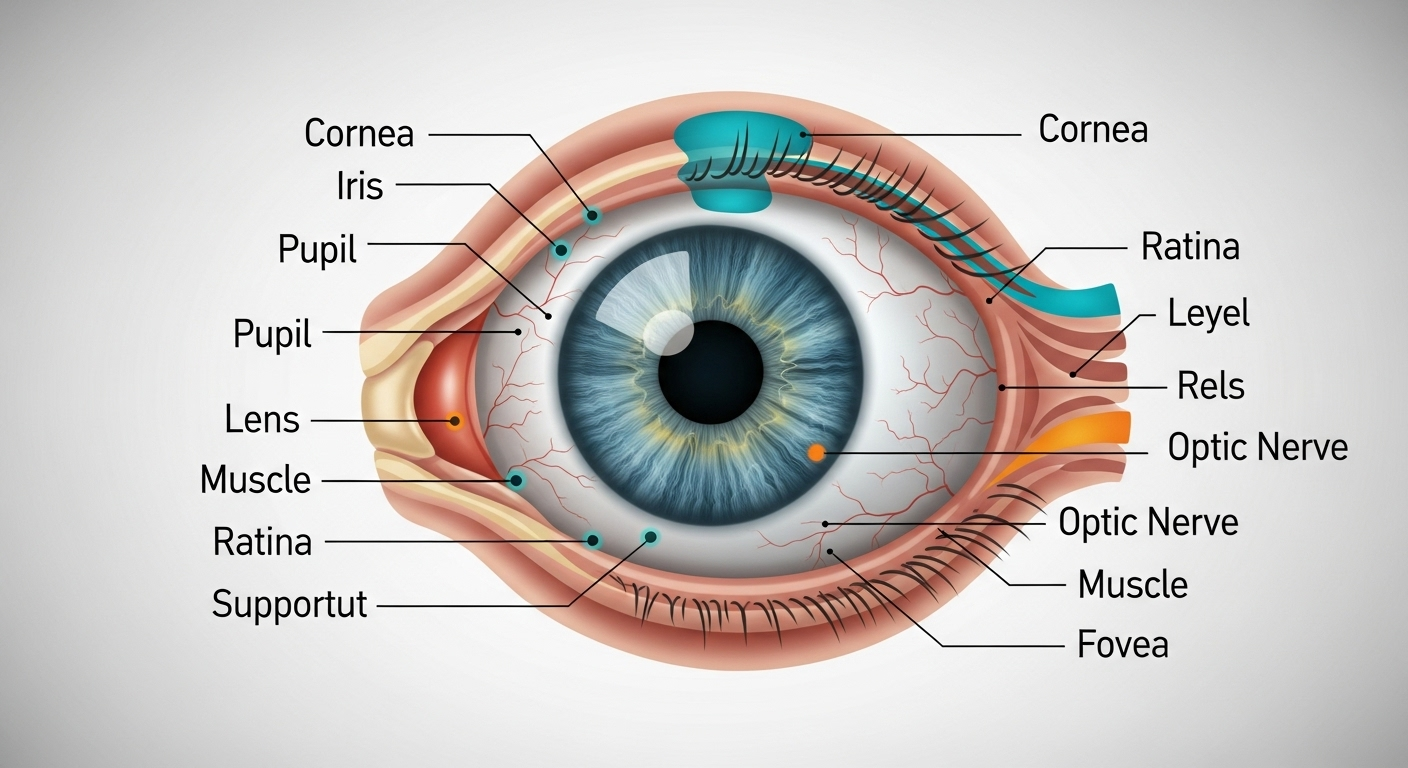1
Refractive Errors (Nearsightedness, Farsightedness, and Astigmatism)
What is it?
Refractive errors happen when the shape of your eye does not bend light properly, causing blurred vision. The most common ones are:
- Nearsightedness (Myopia): You can see close objects clearly, but far objects appear blurry.
- Farsightedness (Hyperopia): You can see distant objects clearly, but nearby objects look blurry.
- Astigmatism: Vision is distorted because of an uneven shape of the cornea.
Symptoms:
- Blurry vision
- Squinting
- Headaches
- Eye strain
Prevention:
- Go for regular eye check-ups.
- Wear prescribed glasses or contact lenses.
- Consider LASIK surgery for permanent correction (available at advanced eye care hospitals like Brar Eye Hospital).
- Avoid straining your eyes by taking breaks from screens.
2
Cataract
What is it?
A cataract is clouding of the natural lens in your eye, which leads to blurry vision. It usually happens with age but can also be caused by diabetes, smoking, or injuries.
Symptoms:
- Cloudy or blurry vision
- Difficulty seeing at night
- Sensitivity to light
- Colors looking faded
Prevention:
- Wear sunglasses to protect against harmful UV rays.
- Eat foods rich in Vitamin C and E.
- Quit smoking and limit alcohol.
- Get regular eye exams after the age of 40.
- If vision loss happens, cataract surgery is a safe and effective treatment.
3
Glaucoma
What is it?
Glaucoma is an eye disease that damages the optic nerve, often caused by high pressure inside the eye. If untreated, it can lead to permanent vision loss.
Symptoms:
- Blurred vision
- Eye pain
- Headaches
- Loss of side vision
- Seeing halos around lights
Prevention:
- Regular eye check-ups (especially after age 40).
- Early detection with eye pressure tests.
- Avoid smoking and maintain a healthy lifestyle.
- If diagnosed, use prescribed eye drops and treatments regularly.
4
Diabetic Retinopathy
What is it?
This is a serious eye condition caused by diabetes. High blood sugar damages blood vessels in the retina, leading to vision problems.
Symptoms:
- Blurred vision
- Dark spots or floaters
- Vision loss in severe cases
Prevention:
- Keep blood sugar, blood pressure, and cholesterol under control.
- Have yearly diabetic eye exams.
- Eat a healthy diet and exercise daily.
- Visit a trusted eye hospital for regular screening.
5
Dry Eyes
What is it?
Dry eyes happen when your eyes do not produce enough tears or the tears evaporate too quickly. This can make your eyes feel irritated or uncomfortable.
Symptoms:
- Burning or stinging in eyes
- Redness
- Blurred vision
- Feeling like something is in the eye
Prevention:
- Avoid direct air from fans or AC blowing on your eyes.
- Use artificial tears (eye drops).
- Blink often while using computers or mobile phones.
- Drink plenty of water and include omega-3 fatty acids in your diet.
- See a doctor if the problem continues.
6
Conjunctivitis (Pink Eye)
What is it?
Conjunctivitis is an infection or inflammation of the conjunctiva, making the white part of your eye red. It is often caused by infection, allergies, or irritants.
Symptoms:
- Redness in the eye
- Itching or irritation
- Discharge or watery eyes
- Crust on eyelids in the morning
Prevention:
- Wash your hands often.
- Avoid touching or rubbing your eyes.
- Do not share towels or eye makeup.
- Use prescribed medicines if it is bacterial.
7
Age-Related Macular Degeneration (AMD)
What is it?
AMD affects the macula (the central part of the retina), leading to loss of central vision. It usually affects older adults.
Symptoms:
- Difficulty seeing in the center of vision
- Trouble recognizing faces
- Straight lines appearing wavy
Prevention:
- Eat a diet rich in leafy greens, nuts, and fish.
- Avoid smoking.
- Protect eyes from UV light with sunglasses.
- Get eye exams regularly after age 50.
8
Eye Allergies
What is it?
Eye allergies occur when the eyes react to allergens like dust, pollen, smoke, or pet dander.
Symptoms:
- Itchy eyes
- Redness
- Watery eyes
- Swollen eyelids
Prevention:
- Avoid exposure to allergens.
- Keep windows closed during pollen season.
- Wash your hands and face regularly.
- Use anti-allergy eye drops if needed.
9
Eye Strain (Digital Eye Strain or Computer Vision Syndrome)
What is it?
Spending long hours on mobile phones, laptops, or TV can cause eye strain. It is becoming very common today.
Symptoms:
- Headache
- Blurred vision
- Dry eyes
- Neck and shoulder pain
Prevention:
- Follow the 20-20-20 rule: Every 20 minutes, look at something 20 feet away for 20 seconds.
- Adjust screen brightness.
- Use blue-light filter glasses.
- Take regular breaks from digital screens.
10
Eye Injuries
What is it?
Accidents, dust, or foreign objects can cause minor or serious eye injuries.
Symptoms:
- Pain
- Redness
- Blurred vision
- Tearing
Prevention:
- Wear protective eyewear while working with tools, chemicals, or during sports.
- Avoid rubbing eyes if something enters them.
- Wash gently with clean water and see a doctor immediately if the injury is serious.



